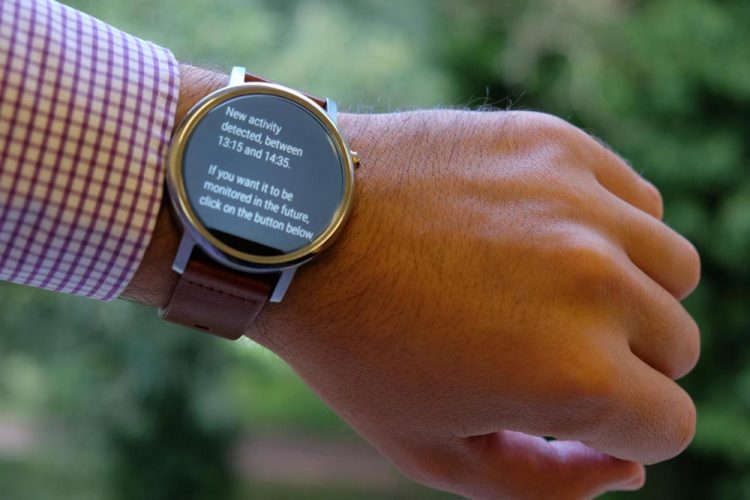Algorithm unlocks smartwatches that learn your every move

A new algorithm invented at the University of Sussex enables smartwatches to learn your everyday activities. Credit: Hristijan Gjoreski / University of Sussex
Current smartwatches can recognise a limited number of particular activities, including yoga and running, but these are programmed in advance.
This new method enables the technology to discover activities as they happen, not just simply when exercising, but also when brushing your teeth or cutting vegetables.
The algorithm can even track sedentary activity, for instance whether you are lying or sitting down.
Dr Hristijan Gjoreski of the University of Sussex said: “Current activity-recognition systems usually fail because they are limited to recognising a predefined set of activities, whereas of course human activities are not limited and change with time.
“Here we present a new machine-learning approach that detects new human activities as they happen in real time, and which outperforms competing approaches.
“Traditional models ' cluster' together bursts of activity to estimate what a person has been doing, and for how long.
For example, a series of continuous steps may be clustered into a walk. Where they falter is that they do not account for pauses or interruptions in the activity, and, so, a walk interrupted with two short stops would be clustered into three separate walks.
The new algorithm tracks ongoing activity, paying close attention to transitioning, as well as the activity itself. In the example above, it assumes that the walk will continue following the short pauses, and therefore holds the data while it waits.
Dr Daniel Roggen, head of the Sensor Research Technology Group at the University of Sussex, will speak at the British Science Festival on 6 September in the event 'In the era of wearable technologies' . He added: “Future smartwatches will be able to better analyse and understand our activities by automatically discovering when we engage in some new type of activity.
“This new method for activity discovery paints a far richer, more accurate, picture of daily human life.
“As well as for fitness and lifestyle trackers, this can be used in healthcare scenarios and in fields such as consumer behaviour research.”
The research will be published at the International Symposium on Wearable Computers in Hawaii, USA, in September.
Media Contact
All latest news from the category: Information Technology
Here you can find a summary of innovations in the fields of information and data processing and up-to-date developments on IT equipment and hardware.
This area covers topics such as IT services, IT architectures, IT management and telecommunications.
Newest articles

“Nanostitches” enable lighter and tougher composite materials
In research that may lead to next-generation airplanes and spacecraft, MIT engineers used carbon nanotubes to prevent cracking in multilayered composites. To save on fuel and reduce aircraft emissions, engineers…

Trash to treasure
Researchers turn metal waste into catalyst for hydrogen. Scientists have found a way to transform metal waste into a highly efficient catalyst to make hydrogen from water, a discovery that…

Real-time detection of infectious disease viruses
… by searching for molecular fingerprinting. A research team consisting of Professor Kyoung-Duck Park and Taeyoung Moon and Huitae Joo, PhD candidates, from the Department of Physics at Pohang University…





















